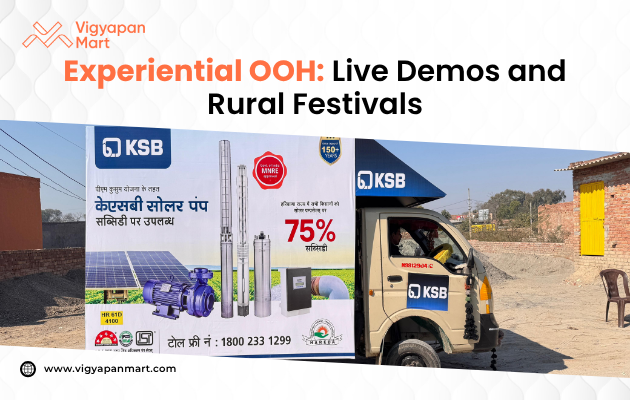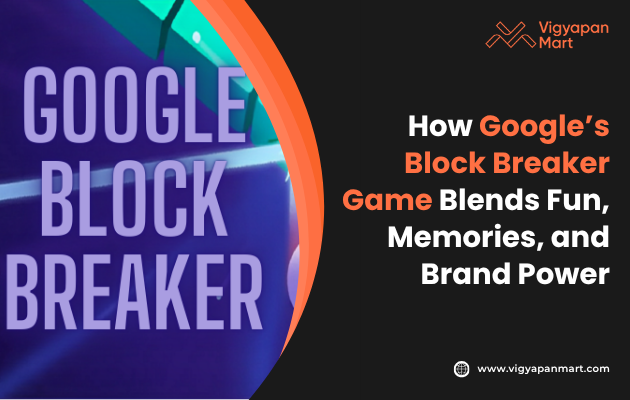Experiential OOH: Live Demos and Rural Festivals

Experiential OOH (Out-of-Home) marketing is an exciting way for brands to connect with people outside their homes. This type of marketing uses live experiences like demos and festivals to make products and messages stick in the minds of consumers. In places like rural areas, these strategies are changing how brands talk to new customers and build trust.
What Is Experiential OOH?
Experiential OOH means creating events or activities where people can see, touch, or try products in real life. Unlike just seeing ads on billboards or posters, experiential marketing invites people to take part actively. For example, brands might do live product demonstrations or set up fun booths at festivals. This approach helps people remember the brand better and understand its product clearly.
Why Focus on Rural Festivals and Live Demos?
Rural festivals are a big deal because they bring many people together who share strong local traditions and cultures. These events offer a golden chance for brands to meet people face to face. When brands participate in such festivals or hold live demos there, they build a stronger connection with rural consumers who mostly rely on personal experience before buying something.
Live demos are powerful because they allow people to see how a product works and ask questions in real time. For customers in smaller towns or villages, who might not trust TV or internet ads fully, seeing is believing. For example, banks or fintech companies use live activations in rural areas to teach people about mobile banking or insurance products by showing them how to use these services on the spot.
How Does Experiential OOH Work in Rural Areas?
Rural marketing has its special challenges like lower electricity, less internet access, and diverse languages. But brands overcome these by using creative ways like illuminated walls that glow in dark areas or using local art and murals to make ads relatable. Digital screens are being installed even in smaller towns, mixing traditional outdoor ads with modern technology to create dynamic and interactive experiences.
For rural audiences, it's not only about advertising but educating as well. Experiential marketing helps explain complex ideas like financial products or digital payment apps where just seeing an ad won't be enough. These activations often collect real-time feedback from visitors and later use this data to improve their marketing effort.
Examples of Successful Experiential OOH Campaigns
- One well-known example was during a huge religious festival in India called Kumbh Mela, where brands set up "Lost & Found" booths to help families track missing members. They also gave out free samples of their product. This act was useful and created goodwill while also promoting the brand.
- Another example is Tata Tea's “Jaago Re” campaign. It used murals, bus shelters, and other local visuals in smaller cities and towns to spread a message of social awareness. This approach connects with people by using familiar cultural symbols and local languages, making the communication feel more personal and trustworthy.
Brands also use mobile tech integration alongside physical events. As mobile internet spreads in rural areas, brands combine OOH activations with app downloads, social media engagement, and even virtual reality experiences. This mixed approach engages people of all ages and tech-savviness levels.
Why Does Experiential OOH Work So Well?
Research shows that 85% of customers are more likely to buy a product after a live experience. Live demos help 65% of consumers understand products better than any other ad method. And by making people active participants rather than passive viewers, brands build stronger emotional bonds.
Experiential marketing also creates buzz. People share their live experience on social media or mouth-to-mouth, helping brands reach even more customers without extra cost. This is something static billboards or TV ads can rarely achieve on their own.
What Should Brands Keep in Mind When Doing Experiential OOH?
- Make it local and relevant: Use local languages, traditions, and cultural symbols to connect better with the rural audience.
- Keep it simple and interactive: Products or ideas shown should be easy to understand and invite participation.
- Use technology smartly: Combine digital screens, AR/VR, or mobile apps with live demos to create stronger engagement.
- Be sustainable: Especially in rural areas, brands must use sustainable methods that respect the environment and local conditions.
- Collect feedback: On-ground interactions are valuable sources of data to improve marketing strategies further.
Conclusion:
Experiential OOH marketing through live demos and rural festivals is a growing trend that helps brands reach deeper into new markets. By bringing products to life in real settings, brands build trust, educate customers, and create memorable experiences that turn people into loyal fans. As technology and tradition blend, this method will likely become more important in connecting urban brands with rural consumers everywhere. Want to launch a Live Demo rural advertising camp for penetrating the rural market? Connect with Vigyapan Mart experts today.









